Nesting Seabirds, Migrating stopover species, and winter roosting species are portrayed in these videos.

Nesting Seabirds, Migrating stopover species, and winter roosting species are portrayed in these videos.
Underwater Webcasts by the Divers
The Underwater Environmental Data Sensor Bar.
 |
 |
kjkjkjkjk |
| In December 2000, the students and faculty of Pearson College install the first of the underwater environmental data sensors | Fouling -or succession– depends on how you look at it. |
Underwater Work for the Tidal Energy Project
 |
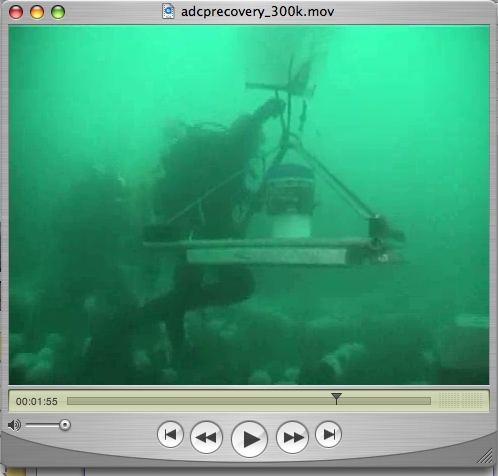 |
 |
 |
| ADCP deployment for the Tidal Power Project | Deployment and Retrieval of the ADCP from the Bottom of the Channel | Succession Study of coatings and materials | Chris Blondeau and Juan Carlos video the substrate at the site of the piling installation, and test the depth of the overburden. |
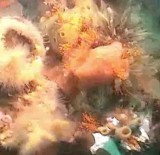 |
 |
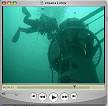 |
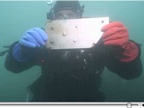 |
| Turbine site hydroid survey by Chris Blondeau and Juan Carlos Yabar, 2006
|
Pam and Jason from Archipelago Marine do their underwater survey of the location of the Piling Drilling for the Current Energy Project. | Video on the Pearson College, EnCana, Clean Current Tidal Power Demonstration Project at Race Rocks
|
In December of 2007,The Pearson College Divers installed a set of junction boxes as part of a materials testing experiment for the tidal energy project. |
On November, 2003, we hosted a group of First Nations divers from Nass River. Matt Hill provided information on the marine resources of that area.
On May 2, 2000, we were privileged to take several members of local First Nations to Race Rocks. The late Earl Claxton, councillor of the Tsawout First Nations and his grandson were among those attending. Joe Bartleman, councillor of the Tsartlip First Nations also helped us to visualize the importance of marine animals in the diet of the people.
They talked with us about the past and present role of coastal ecosystems in the lives of the Salish people. These people always have been an integral part of ecosystems such as this one at Race Rocks. These video clips convey some of the stories that Earl and Joe had to tell about their people and their interactions with marine resources.
“When the tide went out, the table was set” for First Nations people in this area. At Race Rocks this would have been particularly important because of the rich biodiversity in the intertidal zone.
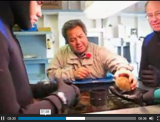 |
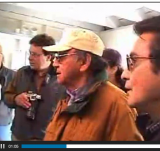 |
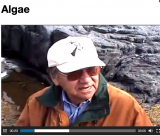 |
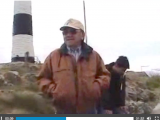 |
| Matt Hill explaining the Northern BC First Nations names of marine resources | Earl Claxton, councillor of the Tsawout First Nations and Joe Bartleman, councillor of the Tsartlip First Nations interviewed at Race Rocks offer comments on the role of First Nations people in the coastal ecosystem of the Salish Sea. | Earl tells us about the food and medicinal role of some marine algae from the intertidal areas | Transportation on the Salish Sea was so important to the cultures of the West Coast. While looking at an old carved canoe, Earl reflects on the types of canoes used . This canoe is used as a focal point for First Nations resources in our education program. |
The Salish First Nations have lived as part of the Race Rocks Ecosystem for millennia. We have been fortunate to have as our advisor on the Marine Protected Area Advisory Committee a long time friend of the Pearson College Community, Tom Sampson of the Tsartlip First Nation. Through his wise guidance, we have come to realize the importance of the Race Rocks area as a valuable resource for education about First Nations Values.
The students of Lester Pearson College are frequently taken to Race Rocks for educational field labs. Pearson College has, since automation in 1997, paid for the staffing and upkeep of the island. These videos portray some of the exercises that are done throughout the year on the island. The college biology and environmental systems classes, students on special projects, and outside researchers make extensive use of the facilities. In addition several videos portray the physical factors that help to make Race Rocks an unusual ecosystem.
Facilities on the Island and the MPA.
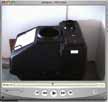 |
 |
 |
|
| Installation of Composting Toilets at Race Rocks | The future of alternate energy at Race Rocks. Interview with Taco Niet, Masters student at the University of Victoria (June 2001) |
Race Rocks is officially declared a Marine Protected Area by Canada’s Ocean’s Minister Herb Dhaliwal and British Columbia’s Environment Minister Joan Sawicki. Also see the MPA day File. |
Underwater Research
at Race Rocks
 |
 |
 |
 |
| Abalone tagging at Race Rocks with Pearson College graduate Jim Palardy | A dive with Dr. Scott Wallace for the Discovery Channel, May 7, 2000 |
Alberto Lindner of Brazil visits Race Rocks for research on the Hydrocoral Allopora | Dr. Gitai Yahel and research on Ecology of Suspension Feeders |
Physical Factors and their Effects on Race Rocks
 |
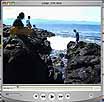 |
 |
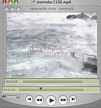 |
| Tidal Level Variation at Race Rocks | Surge Channel and Surge as an Abiotic Factor | The Flood Current at Race Rocks | Wind Storm at Race Rocks |

|
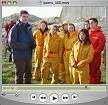
|
|
| Demolition at Race Rocks: Shows the stone building originally built at the base of the tower and the wooden foghorn tower. Both removed in the ’60’s and 70’s. See this file on the foghorns. | Darcy Mathews explains his research on Burial Cairns at Race Rocks to the Anthroplogy students from Pearson College. |
Rusted parts of the old boiler from the engine room are carried up to a
collection of other old parts stored at the base of the tower.